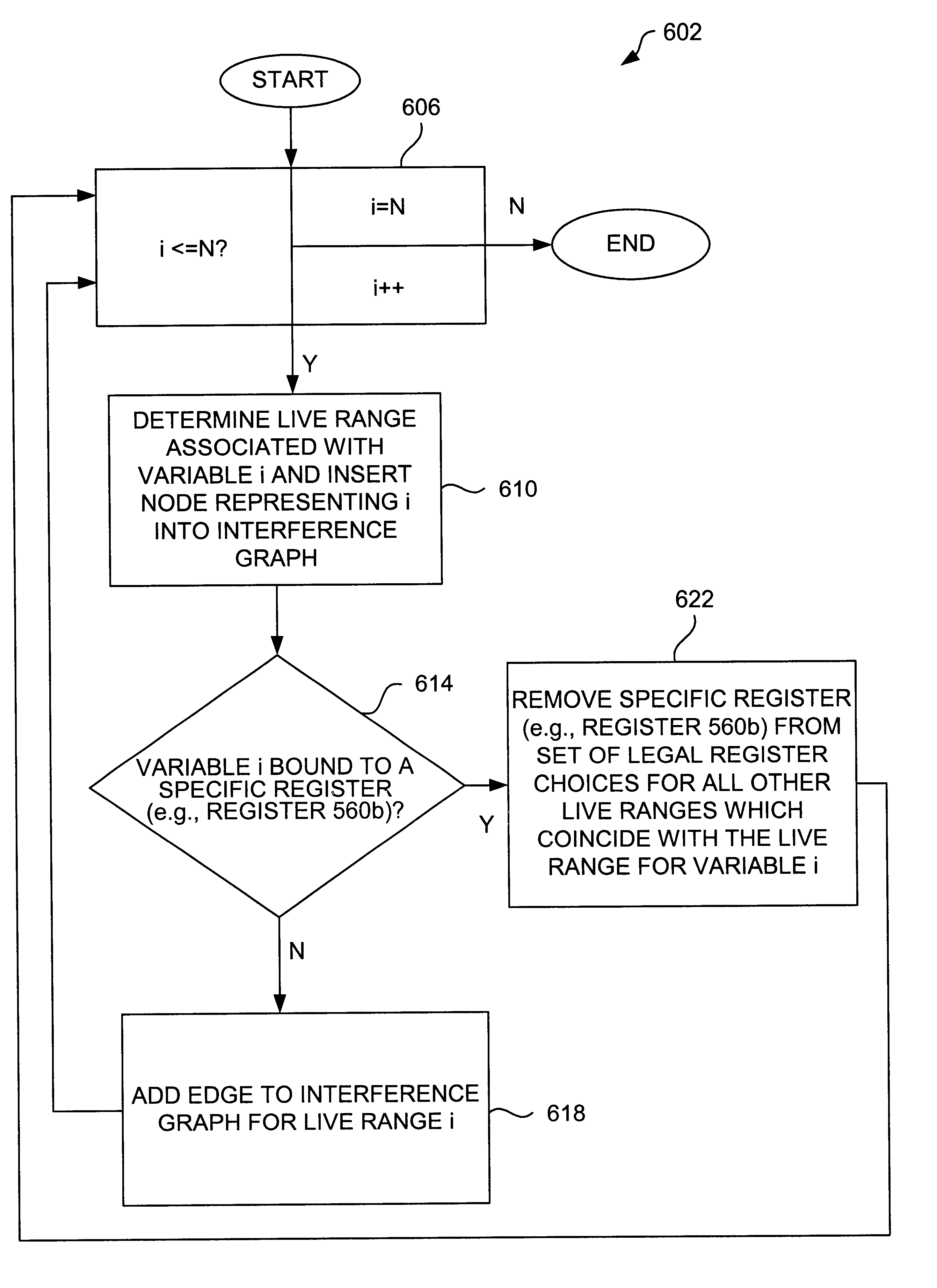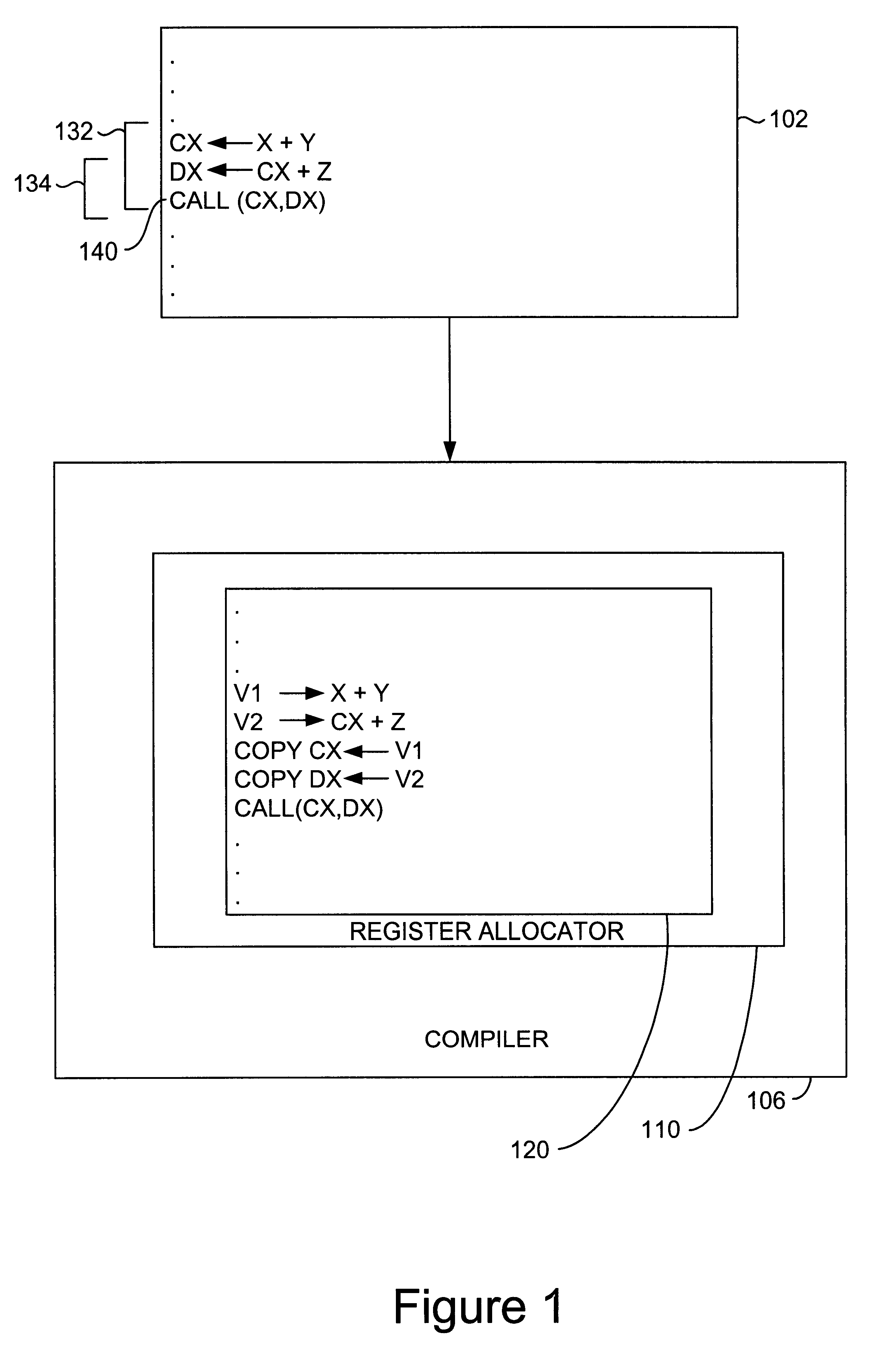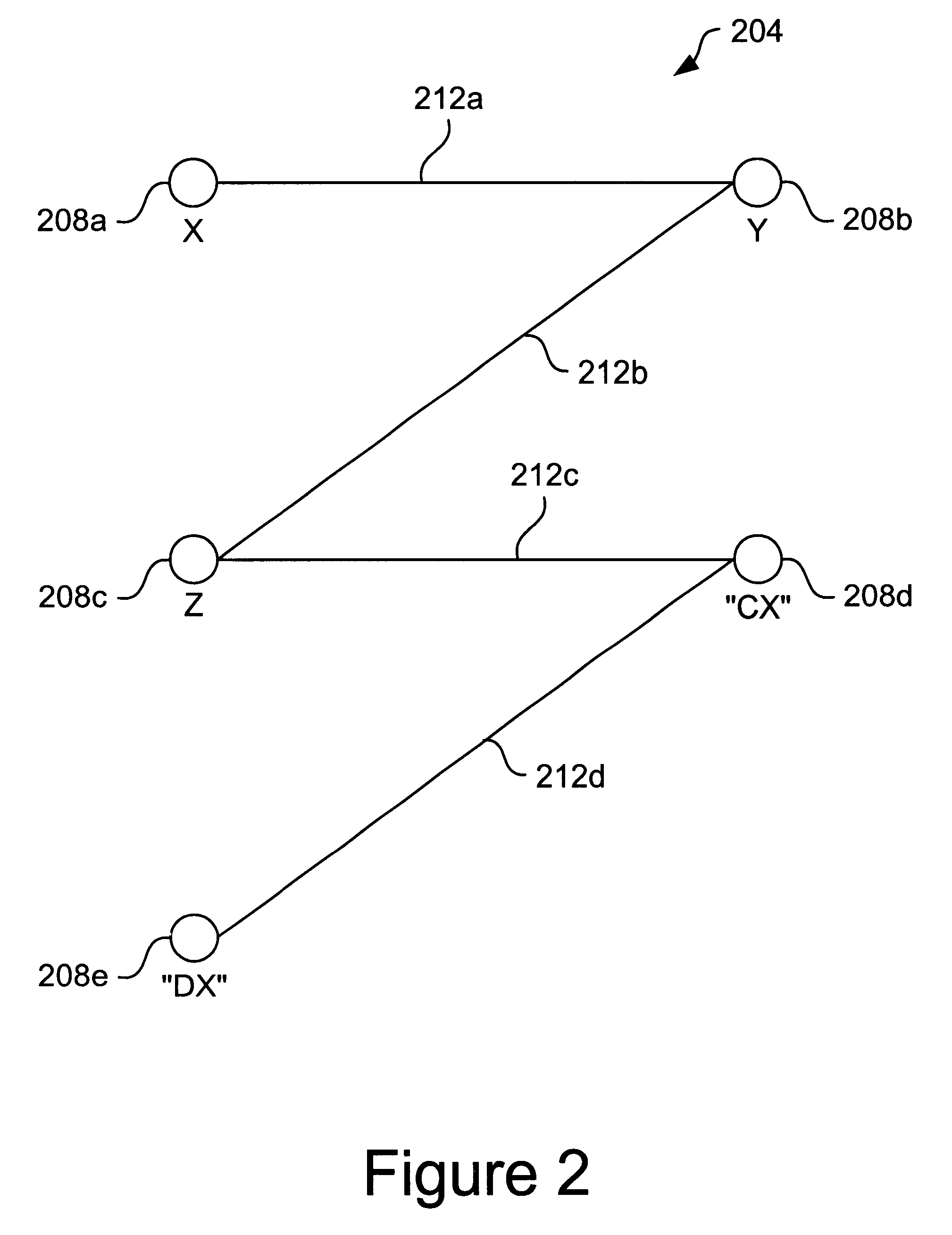Method and apparatus for producing a sparse interference graph
a sparse interference and graph technology, applied in the field of methods and apparatus for improving the performance of software applications, can solve the problems of using an interference graph or other approach, and consuming fewer computer resources,
- Summary
- Abstract
- Description
- Claims
- Application Information
AI Technical Summary
Problems solved by technology
Method used
Image
Examples
Embodiment Construction
As a part of a register allocation process, an interference graph may be created and colored in order to allow registers and stack slots, as appropriate, to be assigned to variables without conflicts. Interference graphs are often relatively large, and the complexity of processes used to color the interference graphs typically increases as the size of the interference graphs increases. Interference graphs which occupy a relatively large amount of memory space tend to occupy memory space which would otherwise be available for other purposes. Further, building and coloring an interference graph is a significant part of a register allocation process. Therefore, reducing the complexity associated with building and coloring an interference graph may increase the speed of a compilation process.
In general, reducing the number of nodes and the number of edges included in an interference graph may increase the speed associated with the creation and the manipulation of the interference graph....
PUM
 Login to View More
Login to View More Abstract
Description
Claims
Application Information
 Login to View More
Login to View More - R&D
- Intellectual Property
- Life Sciences
- Materials
- Tech Scout
- Unparalleled Data Quality
- Higher Quality Content
- 60% Fewer Hallucinations
Browse by: Latest US Patents, China's latest patents, Technical Efficacy Thesaurus, Application Domain, Technology Topic, Popular Technical Reports.
© 2025 PatSnap. All rights reserved.Legal|Privacy policy|Modern Slavery Act Transparency Statement|Sitemap|About US| Contact US: help@patsnap.com



